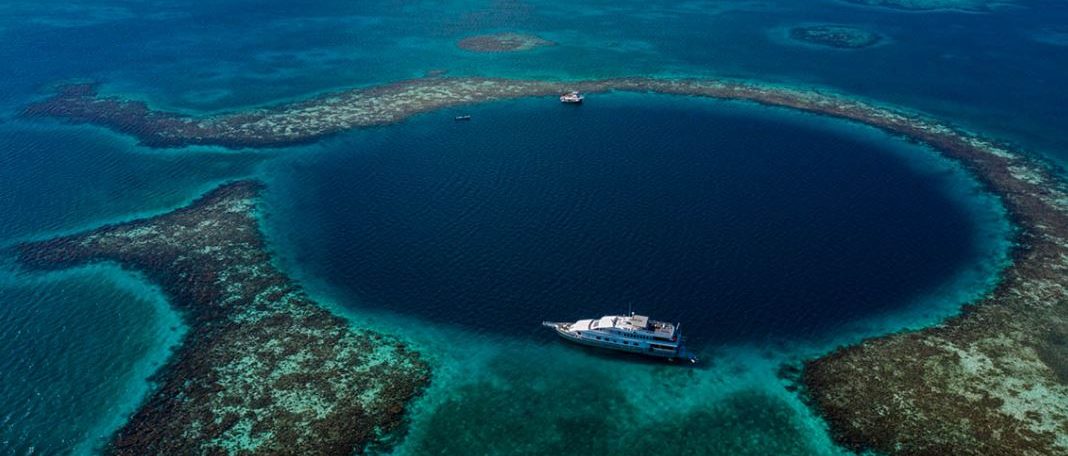In this post we will be looking at what Blue Hole is all about, Its Diversity and Sedimentation and why blue holes are so mysterious.
INTRODUCTION
The National Oceanic and Atmospheric Association calls blue holes underwater sinkholes. Made of karst (calcium carbonate rock), they are known as ecological hot spots. “Blue holes are diverse biological communities full of marine life including corals, sponges, mollusks, sea turtles, sharks, and more,” NOAA says. “The seawater chemistry in the holes is unique.”
The knowledge of blue holes is limited by accessibility issues, sometimes due to opening being too small or the depths being so great, and sometimes due to limited oxygen in the water, making it dangerous to explore without specialized equipment.
Read: Business/ Company Registration in Nigeria
With the openings of blue holes being below sea level, the karst walls block tidal flows, creating a unique mixture of water properties within the hole. The study says that “water properties change significantly with temperature and salinity gradients” in the Taam ja’ blue hole and hydrographic profiles show a layered water column with a low-oxygen layer atop a gas-heavy layer atop another layer with virtually no oxygen.
What is a blue hole?
A blue hole is a massive underwater sinkhole that is hundreds of metres long, often the height of several skyscrapers and spanning areas that are bigger than cities. They are believed to be formed during the latter ice ages around 11,000 years ago because of the erosion of limestone terrains. When seawater meets limestone, water easily permeates the rocks since they are so porous. This enables chemicals in the water to react with limestone, eating it away. Once glaciers melted and seawater rose over time, water rushed into these caverns and filled them up, creating these sinkholes. Blue holes get their names from their indigo centers and light blue perimeters.
Read: History of Nigeria
Blue holes are roughly circular, steep-walled depressions, and so named for the dramatic contrast between the dark blue, deep waters of their depths and the lighter blue of the shallows around them. Their water circulation is poor, and they are commonly anoxic below a certain depth; this environment is unfavorable for most sea life, but nonetheless can support large numbers of bacteria. The deep blue color is caused by the high transparency of water and bright white carbonate sand. The deepest blue hole in the world at 300.89 meters (987 feet) deep is in the South China Sea and is named the Dragon Hole, or Longdong.
The second deepest blue hole in the world with underwater entrance at 202 metres (663 ft) is Dean’s Blue Hole, located in a bay west of Clarence Town on Long Island, Bahamas. Other blue holes are about half that depth at around 100–120 metres (330–390 ft). The diameter of the top entrance ranges typically from 25–35 metres (82–115 ft) (Dean’s Blue Hole) to 300 metres (980 ft) (Great Blue Hole in Belize).
Its Diversity and Preservation
Blue holes have a great diversity of microbes. They create biogeochemical pathways creating a unique and diverse environment within the blue holes. In the surface layer, oxygen, DOC, POC and chlorophyll need to be in low levels in order for cyanobacteria to respire. As depth increases, many branches and sub branches of microbes create specific niches based on the chemistry and nutrient availability of that depth.
Generally, the diversity of all forms of life is 2-3x greater in blue holes than other diverse areas of the ocean, including coastal and abyssal environments. When the diversity of microorganisms is larger, a proportional increase in larger organisms and their diversity is to be expected.
Read: Nigerian Oil and Gas Permits/ Licenses to Know
fossil preservation is very effective due to water conditions at the bottom of blue holes. Insufficient oxygen and light prevent decay; these conditions have resulted in preservation of fossils for thousands of years, allowing scientists to identify the skeletons of species extinct for years, as well as human skeletons. Sediments surrounding the fossils are rich in macro and microfossils (twigs, leaves, pollen, spores, etc.), further improving their preservation.
Why Blue Holes Are So Mysterious.
- Blue holes are considered ecological hotspots with an abundance of plant and animal life. But interestingly, oxygen is scarce inside caves and sunlight is available only near the surface.
- Life in these blue holes has adapted to the low-oxygen environment. It is fueled by the energy created by bacteria that use sulfate instead of oxygen during the process of photosynthesis.
- These giant voids provide scientists with insight into what life on Earth was like millions of years ago when the planet was without oxygen. They could also tell us about life on other planets.
Exploring blue holes requires a level of competence and equipment appropriate to the depth and overhead penetration. In 2009 a team of scientists set out to study seven of these blue holes in the Bahamas. Through over 150 dives, the scientists, led by Keith Tinker, investigated bacteria able to live in anoxic environments. This allowed them to make connections to fields such as astrobiology where organisms thrive without oxygen or sunlight.

